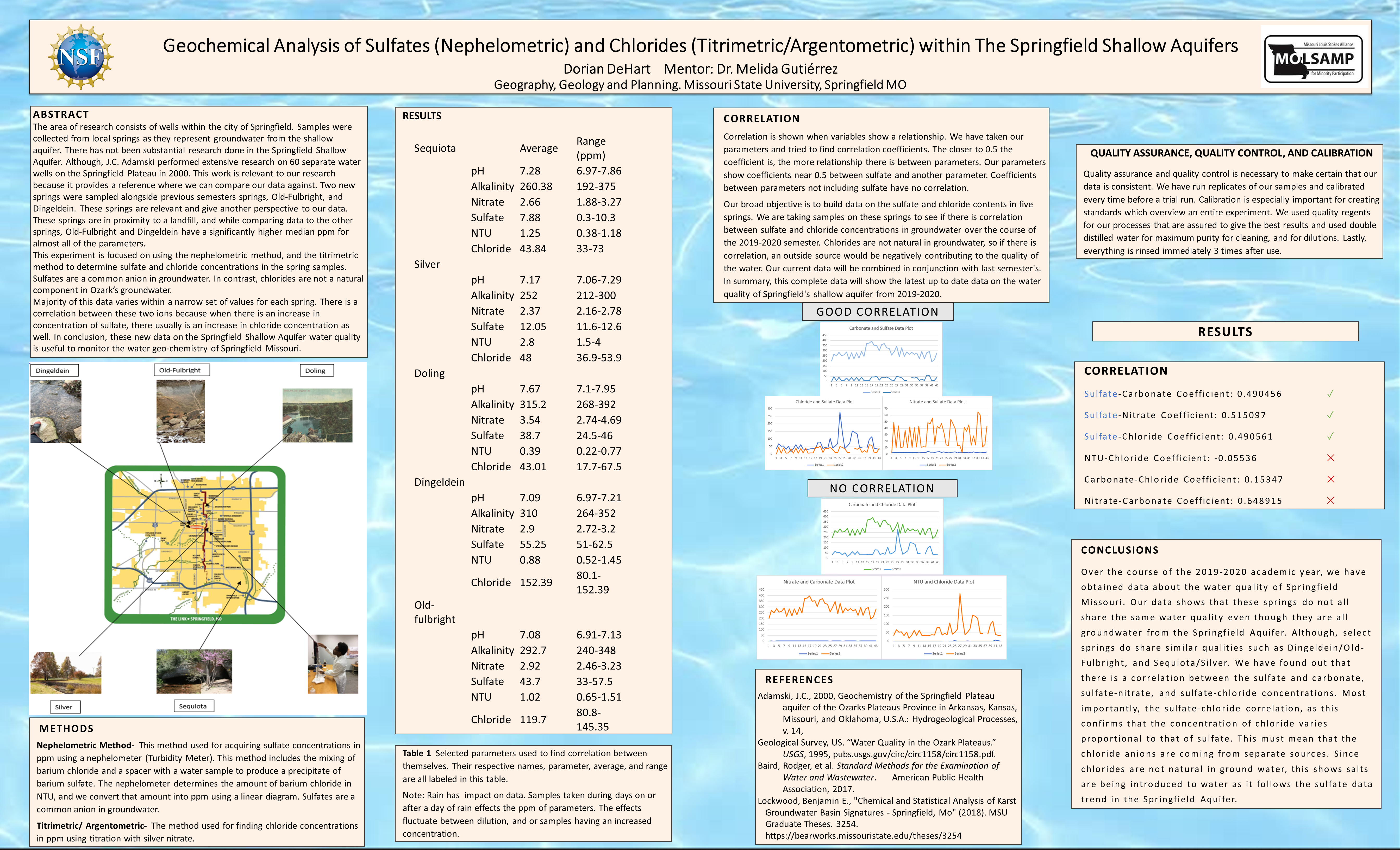Dorian Dehart
Geochemical Analysis of Sulfates (Nephelometric) and Chlorides (Titrimetric/Argentometric) within the Springfield Shallow Aquifer
Our area of research consists of the shallow aquifer within the city of Springfield. Samples were collected from five local springs as they represent groundwater from the shallow aquifer. There has not been substantial research done on this aquifer. Although, a significant study conducted by J.C. Adamski, 20 years ago, has been very useful to this research. Adamski has performed extensive research on 60 separate water wells on the Springfield Plateau.
This semester, we have sampled 2 new springs, Old-Fulbright and Dingeldein. This research is focused on using the nephelometric method, and the titrimetric method to find sulfate and chloride concentrations in parts per million (ppm) within groundwater. The sulfate concentration varied between 3-60ppm, with a median of 32ppm. For chlorides, concentrations varied between 10-300ppm, with a median of 46.1ppm. In this region, carbonate concentrations naturaly occur. On the other hand, chlorides come from outside sources. We believe that there is a correlation between the springs. When there is a spike in concentration of sulfate, there usually is an increase in chloride concentrations.
Dingeldein spring has the most concentration in both sulfate and chlorides. Using Dingeldein as reference, there could be a correlation between the all of the springs because of the simultaneous increase in sulfate and chloride concentrations. In conclusion, this new water quality data on the Springfield Shallow Aquifer can prove beneficial to the study of local water quality of Springfield Missouri.
